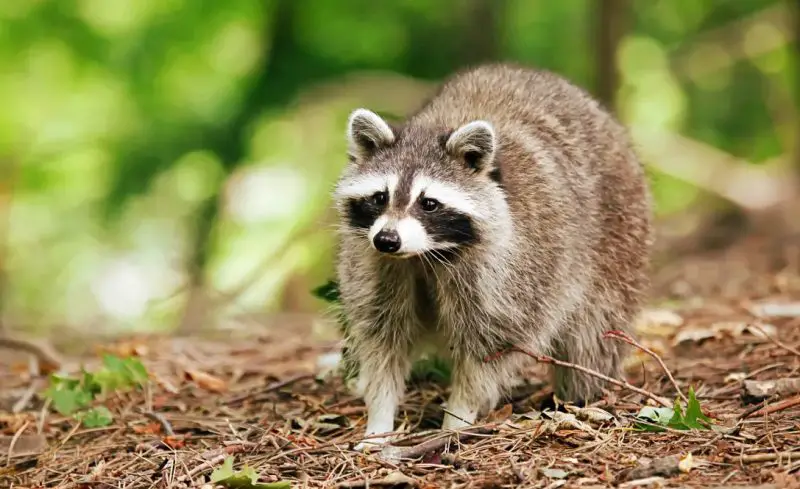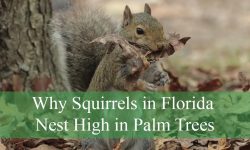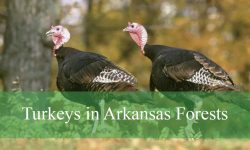California’s cities are full of life—not just people, but an astonishing array of wildlife that has learned to thrive in urban environments. Among the most fascinating of these urban survivors is the raccoon. With their distinctive masked faces and nimble hands, urban raccoons have become both admired and notorious across the Golden State. From Los Angeles alleys to San Francisco parks, these adaptable mammals live surprisingly complex lives, full of intelligence, mischief, and resilience.
But behind their cute appearance lies a hidden world most people never see. This article uncovers the secrets about urban raccoons in California—how they survive city life, what they eat, how they interact with humans, and the surprising ways they’ve adapted to the challenges of living alongside us.
The Rise of Urban Raccoons in California

From Wilderness to City Streets
Raccoons (Procyon lotor) were once primarily forest dwellers, found in wooded areas near rivers and lakes. But as California urbanized throughout the 20th century, raccoons adapted faster than almost any other mammal. Their intelligence, dexterity, and omnivorous diet made them natural pioneers in city environments.
Today, raccoons are common across California’s urban centers, including Los Angeles, San Diego, Sacramento, San Francisco, and even smaller suburban towns like Palo Alto or Santa Barbara. They have learned to use storm drains, attics, and abandoned buildings as shelters—essentially turning the city itself into a vast raccoon habitat.
Why Urban Environments Attract Raccoons
Cities provide raccoons with abundant food and shelter. Unlike the unpredictable wild, where food availability fluctuates with the seasons, urban raccoons enjoy a steady buffet of garbage, pet food, fruit trees, compost bins, and bird feeders. Add to that the warmth of crawl spaces, garages, and sewers, and it’s no surprise they’ve flourished.
Urban raccoons now outnumber their rural counterparts in many areas—a testament to how adaptable and opportunistic these masked bandits truly are.
The Secret Life of Urban Raccoons
Nocturnal Ninjas of the Neighborhood
Raccoons are primarily nocturnal, coming out after dark to forage through backyards and alleys. Their distinctive paw prints and overturned trash cans are telltale signs of their nightly adventures. Despite their reputation for chaos, raccoons are highly methodical animals. Studies show they can remember solutions to complex tasks for up to three years, making them some of the most intelligent urban mammals.
At night, raccoons may travel several miles in search of food, navigating fences, rooftops, and even crossing streets using power lines or walls. Their agility and problem-solving abilities rival that of monkeys or primates in some behavioral tests.
Urban Dens and Hideouts
Where do raccoons sleep in the city? The answer: almost anywhere. Urban raccoons build dens in:
- Attics and crawl spaces
- Abandoned buildings
- Tree hollows in parks
- Storm drains and culverts
- Under decks or sheds
They often rotate between multiple dens to avoid detection or parasites. Mothers raising kits (baby raccoons) especially favor secure spaces like attics or chimneys, where their young are safe from predators and weather.
Family Life in the City
Urban raccoon families are close-knit. Females typically give birth in spring (April–June), raising litters of two to five kits. The mother provides food and teaches her young essential survival skills—such as finding food and avoiding humans. Males usually live solitary lives, joining females only during mating season.
Young raccoons stay with their mothers until late fall before venturing off to establish their own territories. In crowded cities, these territories often overlap, leading to fascinating social interactions and occasional turf disputes.
What Urban Raccoons Eat in California
The Ultimate Omnivores
If it can be eaten, a raccoon will eat it. In the wild, their diet includes frogs, insects, small rodents, fruits, nuts, and bird eggs. But in California’s cities, raccoons have developed a menu shaped by human activity. Common urban raccoon foods include:
- Leftovers and trash from dumpsters
- Dog and cat food left outside
- Fallen fruit from backyard trees (especially oranges, figs, and avocados)
- Birdseed and suet from feeders
- Garden vegetables and compost scraps
Raccoons are opportunistic scavengers with a knack for finding calories wherever they can. They can even open jars, twist knobs, and unlatch containers with their nimble front paws, earning them their “masked bandit” nickname.
Foraging Behavior
Raccoons are tactile foragers. They rely more on touch than sight, using their ultra-sensitive front paws to feel and manipulate objects. They often “wash” their food when near water—a behavior called dousing. While it may look like cleaning, scientists believe it enhances tactile sensitivity rather than hygiene.
In urban California, where water sources like pools, ponds, and fountains are common, raccoons have seamlessly transferred this instinctive behavior to city life.
Raccoons and Humans: A Complicated Relationship
Neighborhood Encounters
Encounters between humans and raccoons are frequent in California. These animals have learned that human neighborhoods offer easy meals. They raid trash cans, knock over recycling bins, and sometimes even sneak through pet doors in search of food. In San Francisco and Los Angeles, raccoon sightings in residential areas have surged in recent years.
While many people find them cute or amusing, others see them as pests—especially when they invade attics or cause property damage. Wildlife experts emphasize that raccoons are not malicious, just resourceful survivors taking advantage of human wastefulness.
Raccoons as Disease Carriers
Though raccoons generally avoid humans, they can carry diseases transmissible to pets or people, including rabies and Baylisascaris procyonis (raccoon roundworm). The latter is especially concerning because its eggs can persist in soil and remain infectious for years. Proper hygiene—like washing hands after cleaning up droppings and keeping pet areas sealed—helps minimize risks.
California’s Department of Fish and Wildlife advises residents not to feed or approach raccoons. Feeding can encourage dependency, aggression, and overcrowding, leading to more human–wildlife conflicts.
Coexistence, Not Conflict
Most urban wildlife experts agree: eradication is neither ethical nor effective. The key is peaceful coexistence. Securing garbage bins, removing pet food, and sealing entry points into homes drastically reduce problems. Raccoons play an important ecological role, consuming rodents, insects, and carrion, which helps keep urban ecosystems balanced.
Secrets of Urban Raccoon Intelligence
Problem Solvers and Tool Users
Raccoons are renowned for their intelligence. Experiments have shown they can solve puzzles, open locks, and remember solutions long after learning them. Their brain-to-body size ratio rivals that of primates, giving them advanced reasoning abilities.
In one study, raccoons were given a series of latches to open in exchange for food. Not only did most succeed, but they later applied the same strategies to new types of locks, demonstrating true problem-solving skills.
Social Learning
Urban raccoons may also learn from observing one another. In densely populated areas like Los Angeles or San Diego, researchers have noted raccoons mimicking each other’s successful foraging behaviors—such as opening latches or raiding compost bins. This suggests that raccoons pass knowledge socially, similar to crows and primates.
Adapting to Noise and Light
City life is full of sensory challenges—sirens, headlights, and human commotion. Yet raccoons adjust remarkably well. They become more nocturnal in busy neighborhoods and may alter their foraging routes to avoid peak human activity. Their flexible behavior allows them to thrive where more sensitive species cannot.
Urban Hotspots for Raccoons in California
Los Angeles County
In Los Angeles, raccoons flourish in parks, golf courses, and suburban neighborhoods. Griffith Park and the Hollywood Hills harbor large raccoon populations, often seen crossing streets at night or scavenging near outdoor dining spots.
San Francisco Bay Area
Raccoons are a common sight in Golden Gate Park, the Presidio, and residential districts like Pacific Heights. Their population density in the Bay Area is among the highest in the state, largely due to the mild climate and abundant human food sources.
Sacramento and the Central Valley
In agricultural and suburban zones around Sacramento, raccoons thrive along irrigation canals, orchards, and gardens. They are particularly notorious for raiding sweet corn fields and chicken coops.
San Diego and Coastal Areas
Southern California’s warm coastal climate supports year-round raccoon activity. They frequent beachside communities, rummaging through picnic areas and beachfront trash cans.
Climate and Seasonal Behavior
California’s Mild Winters
Unlike raccoons in northern states, California raccoons do not hibernate. The state’s mild winters allow them to remain active all year long. However, they may reduce movement during cold or rainy periods, spending more time in dens to conserve energy.
Breeding Season
Urban raccoon mating typically occurs between January and March, though in southern California it can happen earlier. Mothers raise their young in dens until early summer, after which the kits begin exploring with her at night. Urban environments offer abundant food for raising young, making reproduction successful even in densely populated areas.
The Hidden Benefits of Urban Raccoons
While raccoons are often viewed as nuisances, they contribute in surprising ways to the city’s ecology:
- Rodent control: Raccoons eat rats, mice, and insects, helping manage urban pest populations.
- Seed dispersal: By eating fruits and defecating seeds elsewhere, they promote plant growth in green spaces.
- Carrion cleanup: Raccoons consume roadkill and organic waste, naturally reducing disease risk from decaying matter.
These ecological services make raccoons unsung heroes of California’s urban biodiversity.
Challenges Facing Urban Raccoons
Vehicle Collisions
One of the greatest threats to city raccoons is traffic. Thousands are killed annually while crossing roads. Their nocturnal habits and slow gait make them especially vulnerable to cars.
Habitat Loss
As cities expand, raccoons lose access to natural denning sites. This pushes them closer to humans, increasing the potential for conflict. Urban wildlife corridors and green spaces are vital for reducing this pressure.
Human Conflict and Control
Pest control companies often trap or relocate raccoons, but such methods can be cruel and ineffective. Without addressing food and shelter sources, new raccoons quickly move in. Humane management—through prevention and education—is far more sustainable.
Living Safely with Raccoons: Tips for Californians
Protect Your Home and Yard
- Secure trash bins with tight-fitting lids or bungee cords.
- Feed pets indoors; remove leftover food at night.
- Seal attic vents, chimneys, and crawl spaces.
- Trim tree branches that provide roof access.
- Collect fallen fruit and clean up compost regularly.
If You Encounter a Raccoon
- Stay calm and give it space—it will usually retreat.
- Never feed raccoons intentionally.
- If one enters your home, open doors and provide an exit route instead of cornering it.
Helping Urban Wildlife
Supporting city wildlife doesn’t mean inviting them inside. Focus on maintaining clean, balanced environments and respecting their natural behaviors. Wildlife rehabilitation centers across California provide assistance if you encounter injured or orphaned raccoons.
Key Takeaways
- California’s urban raccoons have successfully adapted to city life, thriving alongside humans.
- Their intelligence, memory, and dexterity make them formidable problem solvers.
- They use attics, storm drains, and parks as dens and forage mainly at night.
- Though sometimes considered pests, raccoons play important ecological roles.
- Coexistence—through awareness and prevention—is the best way to manage interactions.
FAQs About Urban Raccoons in California
Do raccoons in California hibernate?
No. California’s mild climate allows raccoons to remain active throughout the year, though they may rest more during cold or rainy spells.
Are raccoons dangerous to pets?
Raccoons generally avoid direct confrontation, but they can defend themselves if cornered. They may also carry diseases harmful to pets, such as distemper or roundworm.
Why do raccoons wash their food?
The “washing” behavior, known as dousing, enhances tactile sensation rather than cleanliness. It helps raccoons feel and manipulate food better, especially near water.
How long do urban raccoons live?
In the wild, most raccoons live 2–4 years, but urban raccoons with fewer predators can live up to 8 years—if they avoid traffic and disease.
Are raccoons protected in California?
Raccoons are classified as nongame mammals. They can be trapped under specific conditions, but relocation without permission from the Department of Fish and Wildlife is illegal.
What should I do if raccoons live in my attic?
Call a licensed wildlife removal expert who uses humane methods. Never seal a den if young kits may be inside. Once removed, repair entry points immediately.
Why are raccoons so common in cities now?
Urban areas offer abundant food, warmth, and shelter. Raccoons have learned to exploit human waste and infrastructure for survival.
Can raccoons become aggressive?
Rarely. Aggression occurs mainly when raccoons are sick, cornered, or defending young. Maintaining distance prevents almost all conflicts.
How can I keep raccoons away naturally?
Use motion-activated lights, secure garbage, and avoid leaving food outside. Strong smells like ammonia or vinegar may temporarily deter them.
Are raccoons good or bad for cities?
They’re neither. Raccoons are opportunistic survivors that play both helpful (rodent control, cleanup) and challenging (property damage) roles in urban ecosystems.
Final Thoughts
Urban raccoons in California represent one of nature’s greatest success stories in adaptability. In a world dominated by humans, they’ve learned to thrive—not by aggression, but through intelligence, curiosity, and resourcefulness. Their masked faces remind us that wildness still exists, even in our busiest cities.
By understanding their behavior and respecting their needs, Californians can coexist peacefully with these clever creatures. Raccoons aren’t invaders—they’re neighbors, sharing our environment in their own quiet, remarkable way. The next time you spot one rifling through a trash can under the moonlight, remember—you’re witnessing one of the most ingenious survivors of urban evolution.






